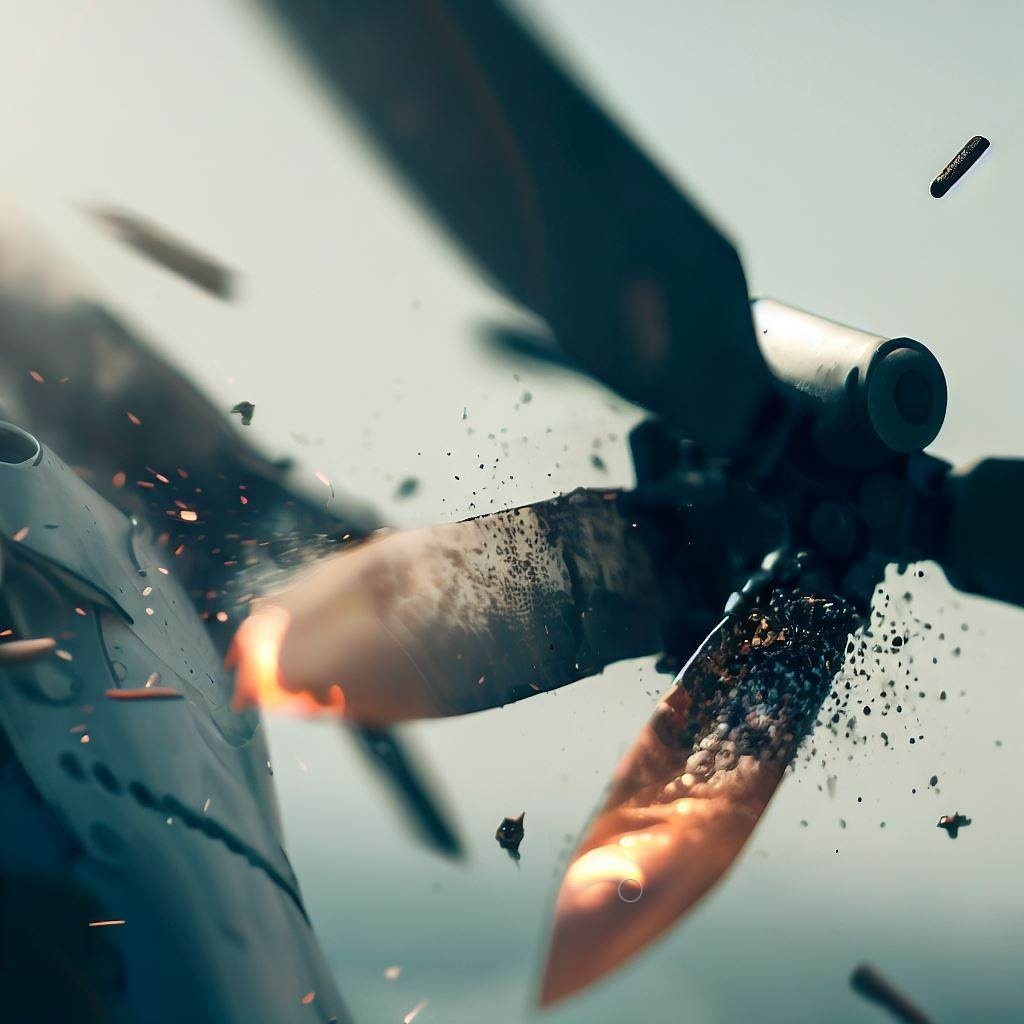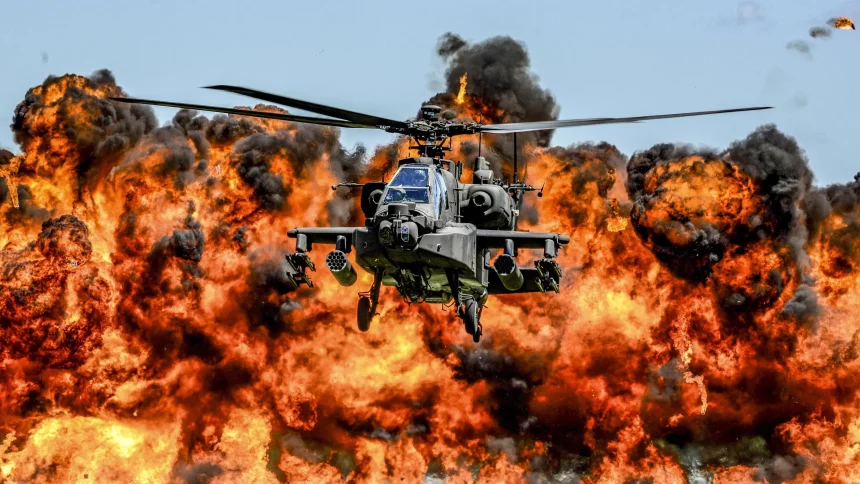Helicopter blades are engineered with precision and strength to endure the rigors of flight. They are crafted from various materials, including metal, composites, and hybrid structures, and are designed to withstand high loads, vibrations, and fatigue. While protective coatings and shields guard against erosion and corrosion, it is important to note that helicopter blades are not impervious to damage caused by ballistic impact.
Role of Kinetic Energy in Blade Damage
The extent of damage inflicted upon a helicopter blade by a ballistic impact is directly related to the kinetic energy transferred by the bullet. The kinetic energy of a bullet is determined by its mass and velocity. In simpler terms, the higher the mass and velocity of the bullet, the greater its kinetic energy. For instance, a 7.9-mm-caliber bullet possesses more kinetic energy than a 5.56-mm-caliber bullet.

Distance and angle significantly impact the kinetic energy transferred to a helicopter blade upon impact. As the bullet travels a greater distance, it loses velocity due to the effects of air resistance and gravity. Moreover, the angle at which the bullet strikes the blade determines the exposed surface area. Consequently, a close-range and perpendicular shot possesses a higher potential for causing damage than a long-range and oblique shot.
Factors Affecting Blade Resilience
A helicopter blade’s resilience depends on its material composition and design characteristics. Various materials exhibit differing levels of impact resistance. Composite materials, for example, possess higher strength-to-weight ratios than metal materials and can absorb greater amounts of energy without breaking. Similarly, specific blade designs, such as those incorporating honeycomb cores or foam fillers, are engineered to dissipate the energy of an impact, enhancing their resistance to damage.
Critical Blade Sections
Certain sections of a helicopter blade bear greater importance and susceptibility to damage. The blade’s root attaches to the rotor hub and experiences most of the load transfer. Any damage sustained in this critical area can compromise the blade’s structural integrity, potentially leading to catastrophic failure. On the other hand, the tip section of the blade travels at high speeds and generates most of the lift. Damage to this region can result in reduced aerodynamic performance and excessive vibrations.
Conclusion
Helicopter blades are meticulously designed to endure the strenuous conditions of flight but are susceptible to damage caused by ballistic impact. Factors such as bullet mass, velocity, distance, and angle all play crucial roles in determining the extent of damage inflicted upon the blades. Additionally, material composition, design considerations, and critical sections of the blade further influence their resilience. By comprehending these factors, engineers can continue to enhance the durability and protective measures implemented in constructing helicopter blades, ensuring the safety and reliability of these essential aircraft components.



